13 reasons why “13 Reasons Why” should be taught in school
The annual required reading list for an average high school student usually consists of the great American classics like Moby-Dick, The Adventures of Huckleberry Finn, and The Catcher in the Rye. Each of these novels is taught to us to help us analyze how to learn from our mistakes and how to act in certain scenarios. Although the lessons from these novels are timeless, there are new issues that arise in the modern age that need to be taught as well. Suicide, for instance, significantly impacts the teenage-young adult community, so why not teach a book to students that acknowledges the issue among others? With the recent release of the Netflix short Thirteen Reasons Why, the original book has been getting all sorts of publicity. Sure, this happens to every book that is transformed into a film adaptation, but this story is different. Twitter and Instagram feeds are flooded with pictures and posts about how influential and important it is to know about Thirteen Reasons Why. A couple of days ago, I was scrolling through my Twitter feed when I came across a tweet that peaked my interest. The twitter account @13ReasonsFans tweeted “I honestly believe that #13ReasonsWhy is something that should be shown in every middle school, high school & college,” and I couldn’t agree more. So if you haven’t seen the show or read the book and you need more convincing, here are thirteen reasons why Thirteen Reasons Why should be taught in school.
1.) Suicide isn’t talked about enough
In health class, it’s part of the curriculum to discuss suicide and depression. That’s it, it’s just part of the lesson.In other words, we never go into depth. They show us one movie and expect everyone to take something from it. It’s like they are expected to all of a sudden realize that suicide is a real thing. The movie they show us is about how a student’s life plummets in one day because he doesn’t get his girl and he bombed the SAT’s. Depression doesn’t work like that! Thirteen Reasons Why paints the inside of Hannah Baker’s brain so clearly, showing how the things people did to her progressively ate away at her soul. It shows how depression takes over slowly but suddenly and before you know it your life can fall apart. When they teach us about suicide in class, it should be a class discussion since we are the ones impacting each other’s lives. We need to talk about it more. I have learned so much more about suicide and depression from this book and series than I ever have in all my years attending health class.
2.) It teaches us an important lesson about each other.
Making silly “harmless” jokes is a part of our nature. We do it when we flirt, when we’re with our friends, and even when we’re with our families. The problem is that what we see as harmless and playful could strike a wrong chord to that person and might denunciate their name. We never realize how much we impact everyone’s life. If this is taught to middle school and high school students, maybe we would all learn to watch what we say, because if we realize a little later, it might be too late.
3.) It emphasizes how cruel high school can be.
Everyone has different high school experiences, and some are totally oblivious to how bad things can get. Adults, for example, have no clue what goes on the minute you step into high school. Every school has an infestation of bullies, harassers, victims, and bystanders. This story is eye opening to the things we already see. We see these things happening, but maybe this story will encourage us to be better people and help others out.
4.) It shows us the proper warning signs of suicide
Suicide is scarily subtle. Sometimes you never see it coming, but when it does, it hits hard. I once knew a boy who committed suicide, and he was one of the last people I would have thought would even consider it. He was always a happy kid and the minute someone started picking on him, the impact was too much for him. Depression is difficult to see and even more difficult to help people with, but it doesn’t have to be. If we start noticing the warning signs, maybe we would have a lot more people living happily on earth. The characters Skye (in the book) and Alex (in the show) illustrate just how subtle the warning signs for suicide are. The characters missed Hannah’s warning signs, now it’s your turn to miss Skye and Alex’s warning signs. Hopefully this story teaches you to not miss them in real life.
5.) It shows how rumors can spread fast.
They teach us in school to be truthful and not spread rumors, but that doesn’t help the rapid fire spread of lies that can erupt in a high school. Hannah was the new girl in school and her fresh start wasn’t exactly fresh. One small lie turned into a rumor which catapulted her chance at happiness because everything bad that happened to her after that was due to the original lie. If kids can see just how fast and deep rumors can damage a person, maybe they’ll learn to keep their thoughts to themselves.
6.) It demonstrates how sometimes the guidance provided is not the guidance you need.
This is the big tape that I feel shocked more readers and viewers than any of the others. Mr Porter, the guidance counselor was at fault for Hannah’s suicide because he was trying to do his job, he was trying to guide her. The problem is, he didn’t do it right. He made Hannah feel like she was at fault for all the horrible things that happened to her, and in that one meeting her entire soul shattered and she found no reason to continue her existence. It’s not that every guidance counselor does this, but when someone is in need of desperate help, it might help to go to someone who knows you more. In Hannah’s case, she didn’t have any friends at the moment. Who could she have talked to? Her parents. Although they might not be the ideal option, family members and people who take care of you are willing to help you in any situation. Hannah didn’t tell her parents about anything, so they couldn’t help her. When they discovered she was being bullied, they tried to get justice for her, but it was too late.
7.) The character Bryce Walker demonstrates the warning signs of sexual, physical, and verbal abuse.
It’s no question that Bryce Walker is the most hated character in Thirteen Reasons Why, but that doesn’t stop other characters from falling into his trap. If people would have noticed his mannerisms and the way he treated certain people, maybe he could have been stopped. From seeing the kind of guy Bryce is, hopefully it stops real life Bryces from being who they are. Let this be a note to everyone: just because you’re rich and good looking, it doesn’t mean you are entitled to treating others like crap and being pushy and overpowering. Clay picked up on how dangerous Bryce was before Hannah revealed it on the tapes. He described a scene in the book where Bryce took a girl to the movies and grabbed her wrist in an abusive manner. Halfway through the movie, she leaves and walks past Clay as he notices that she’s holding her wrist trying to fix whatever harm Bryce inflicted on her. In the show, he seemed evil right off the bat because he sent the picture of Hannah to the whole school, not Justin. If we notice more people like this in real life, we can prevent them from committing heinous crimes like Bryce does.
8.) Teaches people that they can be held accountable for their actions.
As teenagers, we are inevitably going to make mistakes. We make bad decisions and it’s okay for the most part, but when do we surpass the boundary of being acceptably silly and actually harmful? It’s difficult to understand on our end, but this story helps us realize just how reckless we can get and playing a “harmless” joke can actually escalate to something we never meant to happen. Teenagers never seem to recognize the consequences of their actions because our minds are always spinning with new ideas and wondering what to do next, but Hannah Baker shows us the consequences. Even from her grave, she still holds people accountable for what they did in her life. In a way, she screws our heads, as an audience, straight.
9.) People need less friends like Bryce and more like Tony.
We are susceptible to making the wrong kind of friends. You can never tell when you first meet, but sometimes it’s easy to feel like you can’t get out of the friendship, as if you owe them some part of you. Bryce perfectly emphasizes this through his consistent wrongful actions towards his friends and potential girlfriends, but no one ever stopped him. Why? Did they feel like the owed him something? Perhaps, but it comes down to the matter of what you want. The characters permit their subordinance to Bryce to make sure he is still their friend. Some people are like this, and they’re toxic. If they make decisions you don’t agree with or act a certain way to others that you don’t like, don’t stick around. Tony on the other hand is the type of friend everyone should look for and aspire to be. He is honorable and looks out for the people he loves. He helps them in a way that makes them understand everything and is always extremely good with checking in on his friends. Maybe he missed it with Hannah, but Tony redeems himself when he watches out for Clay as he suffers internal conflicts while listening to the tapes.
10.) It scares people into not committing suicide because it affects the people you love way more than the people that don’t matter.
Hannah Baker felt like she didn’t matter. The thing is, she did matter to a lot of people, she just didn’t let them in and understand what she was going through. Her suicide serves as a wake up call for anyone who is suffering with suicidal thoughts. You are loved and cared for more than you may let on, and it’s important to recognize the happy things in your life because if you disappear from the picture, you could affect the very people you made happy. Suicide doesn’t just affect the suicidal, it affects everyone surrounding them.
11.) It opens the discussion to the topic of mental illness.
Mental illnesses are difficult to recognize nowadays. It’s more common than you may think, and a lot more tough to handle. In health class they teach you that if you are mentally ill, you should seek help, but that’s not always easy to do. Some people are afraid to talk about it because they might feel premature judgements developing, but if the topic weren’t such a hushed subject, maybe we would all be more comfortable talking about it. The first step to getting better is talking about it, but if society isn’t comfortable talking about it, how will the victim be? The point is to help people, not scare them away.
12.) It shows people the importance of compassion and empathy.
Life can be cruel in the most unpredictable ways. The only way to reverse feelings of harm are to show some compassion and empathy. There is only so much a person can handle and with more issues piling on top of each other, it’s your job as a friend, acquaintance, family member, etc. to provide them with a breather. Small things can majorly impact a person’s day so giving them a small compliment or even asking them “how are you?” can brighten their day. Asking them what’s wrong could be a good start or a bad start, but it is your job to listen to whatever they have to say. Make them feel important and wanted again, and that small conversation can change the world for them. Be kind, be brave, and be strong. Everyone deserves happiness so if someone feels robbed of everything good, give them something to smile about.
13.) It’s never too late to help someone struggling with internal and external conflicts.
Society needs to step up and play an active role in helping others more. This goes hand in hand with number twelve on this list because it is crucial for us to understand what others are going through. Actively listening, offering help, and even suggesting options can make suicidal people think again about their decisions. If any one of the characters in Thirteen Reasons Why had asked Hannah “what’s going on?” maybe she wouldn’t have killed herself. She wouldn’t have created the tapes that haunt the many characters of the book if one of them showed her the same attention she showed them. Help can be offered in so many ways, and it’s often easier than you might think. Just be there for whoever is going through conflicts. It can make all the difference.
Suicide, depression, self-harm, and many other things this book discusses is extremely important to understand. These lessons need to be taught in school to break down the barrier between the social norm and the tipping point that so many teenagers and young adults experience.
If you yourself are going through a difficult time, please talk to someone, and if you feel like suicide is the only option, call the national suicide prevention lifeline: 1-800-273-8255


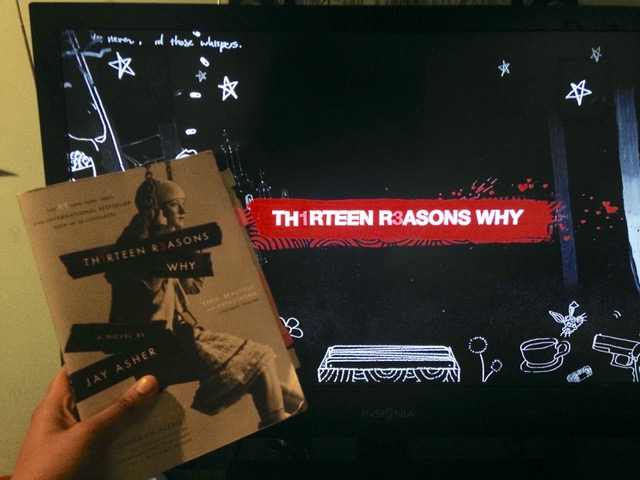


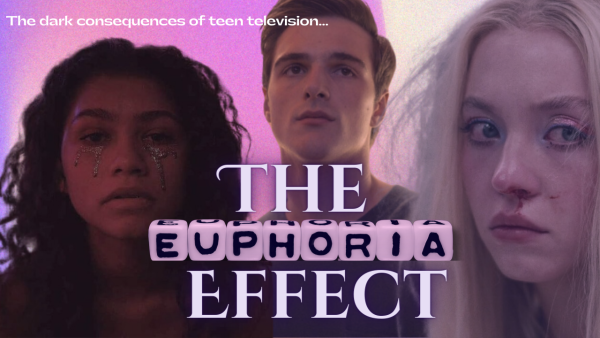
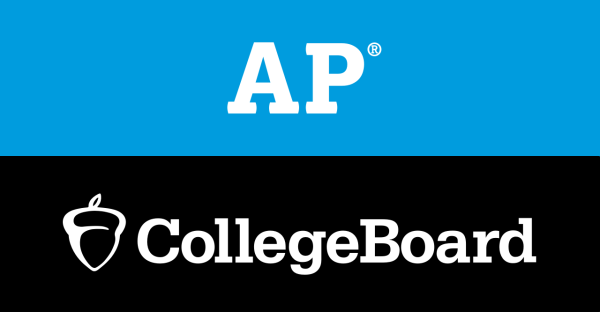
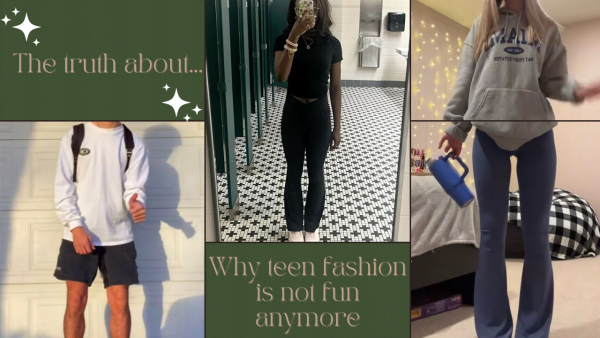


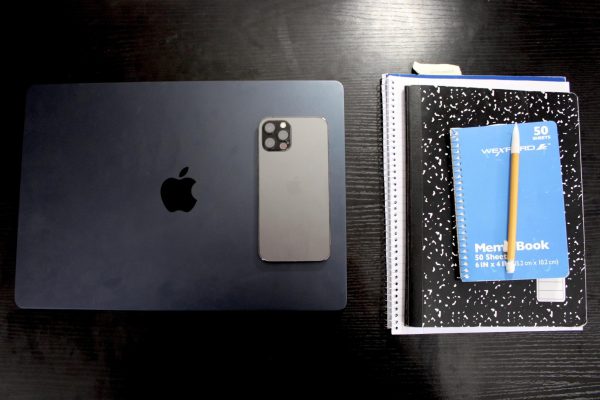
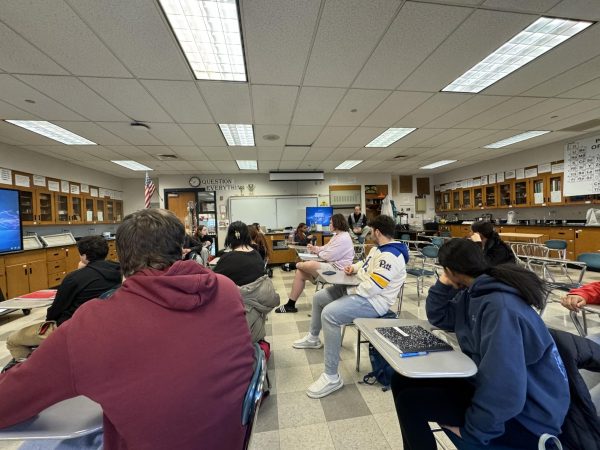
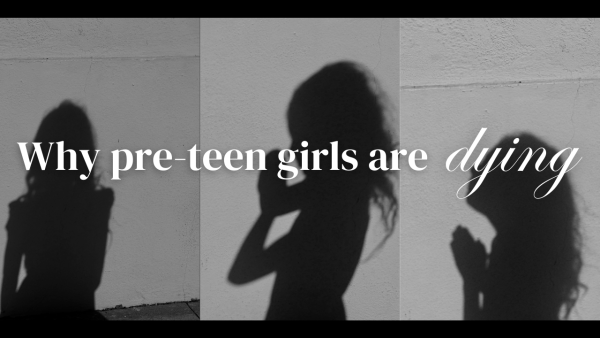
MG • Feb 24, 2020 at 12:34 pm
No, Thirteen Reasons Why should not be shown in schools. 1) Teachers are not therapists. 2) There is not time to finish the series in high school. 3) The show could cause suicide rates to increase. 4) Schools could help non-readers feel better about school and life by teaching them how to read instead of using screen time to avoid the hard work of educating students. Certainly, however, it is good for schools to stop bullying behavior and provide resource information to students.
“Now, a study of suicide rates among children in the US between the ages of 10 and 17 has found a 28.9 per cent rise in April 2017, the month after the show was released.” https://www.newscientist.com/article/2201621-did-netflixs-13-reasons-why-really-increase-suicide-rates/
Kathi Lynch • May 23, 2017 at 11:25 am
Thank you for your opinion. I also think it’s time that school’s take responsibility for helping their students with mental health issues. Afterall, it is the schools that have the most time with the kids. Also, many kids can’t count on their family to help them through issues like this. So thank you for writing this.
Michelle Falter • May 5, 2017 at 1:42 pm
Thank you for sharing your insights. You are brave for standing out amongst the growing list of critics. I wanted to let you know that I included your post in my own blog post: http://www.yawednesday.com/blog/focusing-on-the-wrong-things-a-defense-of-jay-ashersnetflixs-13-reasons-why The voice of teens like you seem to be missing from the overall dialogue.
All the Best,
Dr. Michelle Falter